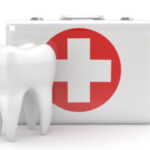Chickenpox has long been associated with infecting people at an early age. Since it only infects once, most children become infected during childhood and later remain immune. Or do they?
Chickenpox can strike at any age; now referred to as Herpes Zoster or shingles, it is most frequently associated with adults aged 50 or above and can manifest as strips of blistered lesions lining one side of our bodies. Lingering dormant in our nervous systems for decades until becoming active again during a particularly vulnerable state – an estimated one third of people develop it during their lives; some young adults or teenagers may encounter mild cases; however for people with compromised immune systems or those aged 50+ complications could even result in serious injury – even leading up to possible death.
How Does Shingles Impact the Body? In rare instances, complications from Shingles can cause death from swelling to occur in lungs, brain and liver resulting in pneumonia as a complication; similar reactions also manifested themselves with Zostavax vaccine resulting in lawsuits filed by those suffering with it. Possible Complications from Shingles Include:
Chronic Encephalitis, Aseptic Meningitis and Polyradiculitis. Autonomic Dysfunction and Motor Neuropathy have also been observed.
Hemiparesis Its While not common, but still relatively rare infections from two species of common bacteria such as Staphylococcus aureus – commonly associated with Staph infections – and Streptococcus pyogenes can increase the likelihood of Hemiparesis symptoms.
In cases where shingles reach the eyes, there’s a high risk of keratitis, scarring and vision loss. Lesions around the face can result in facial paralysis; while blisters around ears could result in hearing loss, vertigo or tinnitus.
Given its long list of possible side effects, if you suspect you have shingles it’s essential that you visit a doctor immediately. Common symptoms for shingles include:
Slight pain or tingling sensations before the rash appears; blistering over the rash that bursts and forms scabs; fever; headaches; burning sensations may accompany.
How is Shingles Treated? Physicians utilize various medications in order to reduce symptoms and hasten recovery. Antivirals are the go-to medicine for treating shingles; they speed healing while decreasing pain caused by itching and blisters. Corticosteroids and analgesics may also be prescribed alongside antivirals; corticosteroids help shrink its effects while analgesics reduce pain levels from them.
Idealy, the rash and its symptoms should dissipate within two or four weeks; this doesn’t always happen though; sometimes pain associated with shingles persists for months after any evidence of rash has gone. When this happens it is called postherpetic neuralgia – chronic discomfort caused by nerve damage as shingles spreads throughout our nervous systems.
Postherpetic neuralgia can often seem like a vague discomfort with no source behind its pain, yet treatment options exist to alleviate its severity. Some medications include:
Topical agents, including lidocaine and capsaicin ointment; antidepressant drugs like nortriptyline and amitriptyline; and anticonvulsants like pregabalin and gabapentin are effective in relieving pain symptoms.
Opioids such as oxycodone or tramadol may provide relief. To find which medicines work best for you, speak to a pain medicine specialist or visit your GP.



















+ There are no comments
Add yours